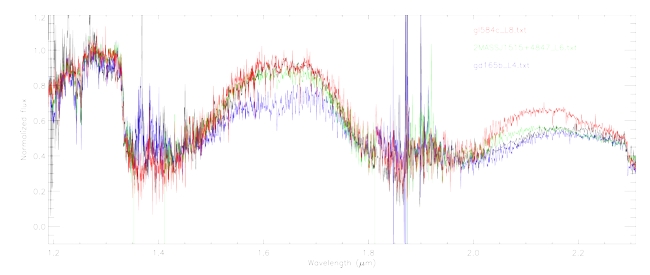Most brown dwarfs require 8m IR spectroscopy to obtain useful physical information though 4m low resolution spectra can be used to obtain just spectral typing information of the brighter targets. There have been a number of small requests on the HST and Gemini for individual objects and some large programs:
For the determination of the spectroscopic types of T dwarf for the determination of the sub-stellar Initial Mass Function we used both the Gemini 8m telescope with the GNIRS spectrograph and the Subaru 8.2m telescope with the IRCS detector.
For the PARSEC program we have obtained 20h/semester for the last 3 semesters on the SOAR 4m telescope using the OSIRIS cross dispersed spectrograph to determine IR spectral types of all targets to completely characterise the sample as well as followup on other discoveries in the fields.
In collaboration with many members of the group we have used the VLT UT2 8m telescope with the Xshooter to constrain the substellar initial mass function and birth rate, by following up a large magnitude limited sample of L-T transition dwarfs. The complete list of targets consist of 262 candidates of which we have observed 130 of them, 119 were confirmed as L or T dwarfs and the remaining 11 turn out to be late M dwarfs.
The SHAO group are leading a number of low resolution spectroscopic surveys on the Large Sky Area Multi-Object Fibre Spectroscopic Telescope (LAMOST) including a sample of red variables in the WFCAM Transit Survey and interesting high proper motion objects from the APOP catalog for general studies of M dwarfs.
The spectra of 2MASS 1928-43
|






